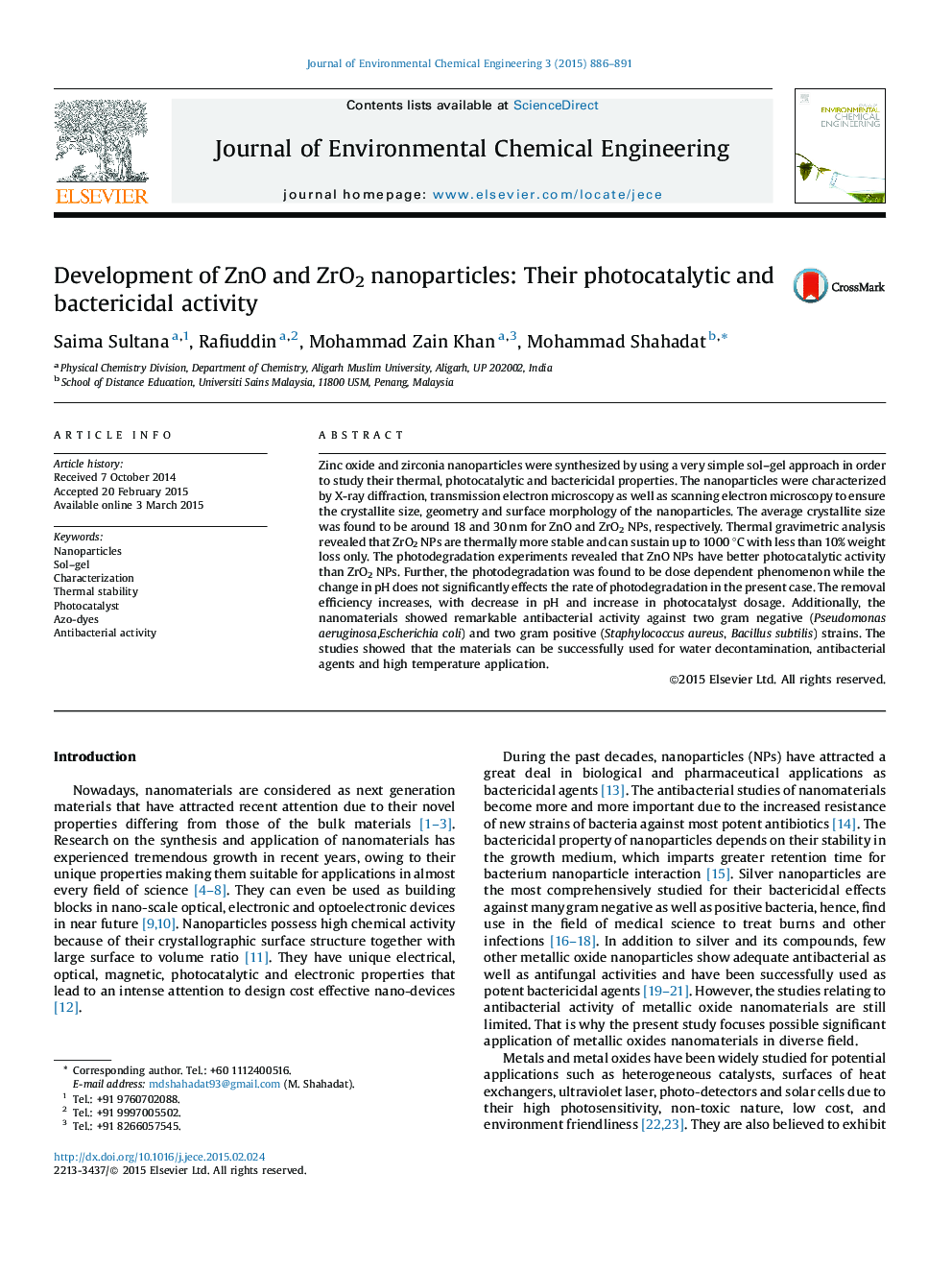| Article ID | Journal | Published Year | Pages | File Type |
|---|---|---|---|---|
| 222311 | Journal of Environmental Chemical Engineering | 2015 | 6 Pages |
Zinc oxide and zirconia nanoparticles were synthesized by using a very simple sol–gel approach in order to study their thermal, photocatalytic and bactericidal properties. The nanoparticles were characterized by X-ray diffraction, transmission electron microscopy as well as scanning electron microscopy to ensure the crystallite size, geometry and surface morphology of the nanoparticles. The average crystallite size was found to be around 18 and 30 nm for ZnO and ZrO2 NPs, respectively. Thermal gravimetric analysis revealed that ZrO2 NPs are thermally more stable and can sustain up to 1000 °C with less than 10% weight loss only. The photodegradation experiments revealed that ZnO NPs have better photocatalytic activity than ZrO2 NPs. Further, the photodegradation was found to be dose dependent phenomenon while the change in pH does not significantly effects the rate of photodegradation in the present case. The removal efficiency increases, with decrease in pH and increase in photocatalyst dosage. Additionally, the nanomaterials showed remarkable antibacterial activity against two gram negative (Pseudomonas aeruginosa, Escherichia coli) and two gram positive (Staphylococcus aureus, Bacillus subtilis) strains. The studies showed that the materials can be successfully used for water decontamination, antibacterial agents and high temperature application.
